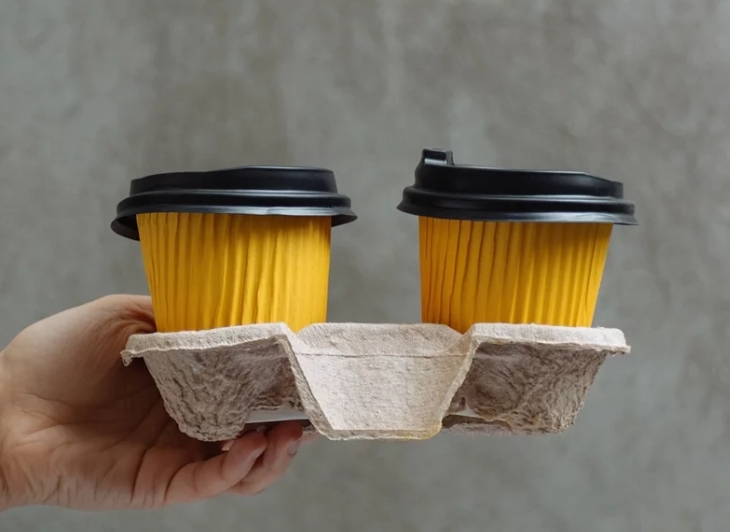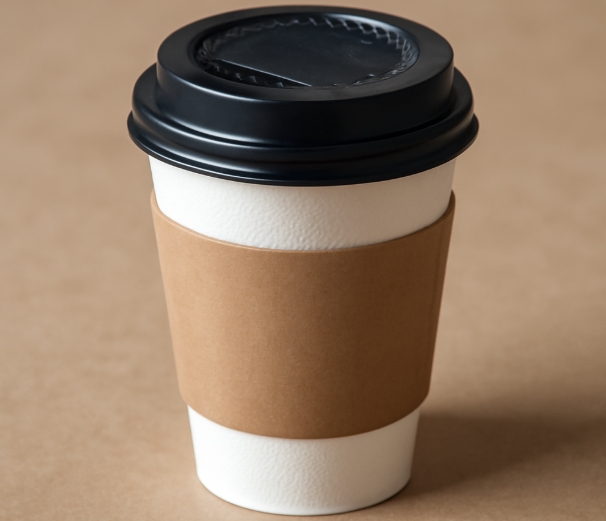
Content Menu
● The Anatomy of a Coffee Cup with Lid Disposable
>> How Are Disposable Coffee Cups Made?
● The Manufacturing Process of Disposable Coffee Cups
● The Science of Heat Retention
>> Insulation: The Key to Keeping Drinks Hot
>> The Role of Lids
● Real-World Performance: How Long Do Drinks Stay Hot?
>> What to Expect from a Coffee Cup with Lid Disposable
>> Can These Cups Keep Drinks Hot for Hours?
● Comparing Disposable Cups with Reusable Coffee Mugs
● The Benefits of Disposable Coffee Cups with Lids
>> Hygiene and Safety
>> Convenience and Portability
>> Cost-Effectiveness
>> Eco-Friendly Options
● Cultural Impact and Popularity of Disposable Coffee Cups
● The Evolution of Disposable Coffee Cup Technology
● Tips for Choosing the Right Disposable Coffee Cup
● Maximizing Heat Retention: Tips for Hotter Coffee
● Sustainability Considerations
● Conclusion
● FAQ
>> 1. How long can a coffee cup with lid disposable keep my drink hot?
>> 2. What type of disposable cup is best for hot drinks?
>> 3. Are disposable coffee cups with lids environmentally friendly?
>> 4. Do I need a sleeve with my disposable coffee cup?
>> 5. Can I use a coffee cup with lid disposable for cold drinks too?
The simple act of grabbing a coffee to go has become a daily ritual for millions worldwide. Whether you're dashing to work, heading to a meeting, or enjoying a leisurely stroll, the convenience of a coffee cup with lid disposable is hard to beat. But for those who savor their hot beverages, a pressing question lingers: Can disposable coffee cups with lids truly keep drinks hot for hours? This in-depth exploration uncovers the science, design, cultural impact, and real-world performance behind these ubiquitous cups, helping you understand what to expect and how to maximize your coffee experience.

The Anatomy of a Coffee Cup with Lid Disposable
How Are Disposable Coffee Cups Made?
A coffee cup with lid disposable is more than just paper and plastic. The outer layer is typically crafted from sturdy paperboard, providing the cup with its structure and initial insulation. For hot drinks, most manufacturers use a double-wall design, which adds a second layer of paperboard. This creates an air gap, significantly improving heat retention and preventing the cup's exterior from becoming uncomfortably hot to hold.
The inner lining is crucial. Most hot beverage cups are coated with a thin layer of plastic or plant-based material. This lining makes the cup liquid-proof and helps prevent sogginess, ensuring the cup holds up even with steaming hot coffee inside. The lid, usually made from polystyrene or PET plastic, is engineered to fit snugly, minimizing spills and slowing heat loss.
The Manufacturing Process of Disposable Coffee Cups
Understanding how a coffee cup with lid disposable is made sheds light on its design and functionality. The process begins with sourcing high-quality paperboard, which is then coated with a thin layer of polyethylene or a plant-based lining to make it waterproof. The paperboard is cut and shaped into a cup form using specialized machinery that folds and seals the edges to prevent leaks.
The lids are typically injection-molded from polystyrene or PET plastic, designed to fit snugly on the cup to minimize heat loss and spills. Quality control is rigorous, ensuring each cup and lid meets safety and performance standards before packaging.
The Science of Heat Retention
Insulation: The Key to Keeping Drinks Hot
The effectiveness of a coffee cup with lid disposable in maintaining beverage temperature depends on its insulation. Here's how different designs perform:
- Single-Wall Cups: These are basic and economical but offer minimal insulation. Drinks cool quickly, and sleeves are often needed to protect your hands.
- Double-Wall Cups: By adding a second layer, these cups create an insulating barrier. This design slows down heat transfer, keeping drinks warmer for longer and making the cup comfortable to hold without a sleeve.
- Ripple-Wall Cups: Featuring a textured, corrugated outer layer, these cups trap air between layers, further enhancing insulation and grip.
- Foam Cups: Made from expanded polystyrene, foam cups offer excellent heat retention but are less eco-friendly and increasingly restricted due to environmental concerns.
The Role of Lids
A well-designed lid is essential for heat retention. Lids minimize the surface area exposed to air, reducing heat loss through evaporation and convection. Sipper lids, in particular, allow you to enjoy your drink while keeping most of the opening covered, which helps maintain the temperature.
Real-World Performance: How Long Do Drinks Stay Hot?
What to Expect from a Coffee Cup with Lid Disposable
Despite their clever engineering, coffee cups with lid disposable have practical limits. Most double-wall or ripple-wall cups can keep drinks hot—or at least pleasantly warm—for about one to two hours. The exact duration depends on several factors:
- Initial Temperature: Coffee is typically served piping hot. The hotter the starting temperature, the longer it will remain above the “hot” threshold.
- Cup Size: Larger volumes retain heat longer due to a lower surface-area-to-volume ratio.
- Ambient Temperature: Cold weather will cause drinks to cool faster, while a warm room slows heat loss.
- How Often the Lid is Removed: Each time you open the lid, heat escapes rapidly.
- Cup Material and Design: Double-wall and ripple-wall designs outperform single-wall options by a significant margin.
Can These Cups Keep Drinks Hot for Hours?
In most cases, coffee cups with lid disposable will keep your drink hot for up to an hour, sometimes a bit longer if the cup is high quality and remains sealed. After two hours, the beverage will likely be lukewarm, especially if the cup is frequently opened. While these cups are excellent for short-term heat retention, they are not designed to keep drinks piping hot for several hours like a vacuum-insulated thermos.
Comparing Disposable Cups with Reusable Coffee Mugs
While disposable coffee cups with lids offer convenience, many coffee enthusiasts wonder how they stack up against reusable mugs in terms of heat retention and environmental impact.
Reusable mugs, especially those made from stainless steel or vacuum-insulated materials, excel at keeping drinks hot for several hours, far surpassing disposable cups. They also reduce waste significantly, making them a more sustainable choice for daily coffee drinkers.
However, reusable mugs require cleaning and maintenance, which may not be practical for everyone, especially in busy or public settings. Disposable cups fill this niche by providing a hygienic, no-cleanup option. For those who value both convenience and sustainability, some coffee shops now offer discounts for customers who bring their own reusable mugs, balancing the best of both worlds.

The Benefits of Disposable Coffee Cups with Lids
Hygiene and Safety
Single-use coffee cups with lid disposable eliminate the risk of cross-contamination, making them an ideal choice in public spaces, offices, and events. Each cup is clean and ready to use, reducing exposure to germs.
Convenience and Portability
These cups are lightweight, easy to carry, and require no cleaning. The secure lids make them perfect for on-the-go lifestyles, whether commuting, traveling, or attending outdoor events.
Cost-Effectiveness
For businesses, disposable cups reduce the need for washing and replacing breakable crockery, saving both time and money. For consumers, they offer a hassle-free coffee experience without the need to invest in reusable mugs.
Eco-Friendly Options
Many manufacturers now offer compostable or biodegradable coffee cups with lid disposable, made from plant-based materials or bagasse. These options provide the convenience of disposability while minimizing environmental impact.
Cultural Impact and Popularity of Disposable Coffee Cups
The rise of disposable coffee cups with lids parallels the growth of coffee culture worldwide. They have become symbols of modern convenience, enabling people to enjoy their favorite beverages on the go.
In many urban areas, the sight of a disposable coffee cup is synonymous with a fast-paced lifestyle. Coffee shops have capitalized on this trend by offering branded disposable cups, turning them into marketing tools and status symbols. The design and branding of a coffee cup with lid disposable can even reflect social trends, seasonal themes, or environmental awareness campaigns.
The popularity of these cups has also influenced media and popular culture. Scenes of busy professionals clutching their coffee cups are a staple in films and television, reinforcing the association between disposable cups and contemporary urban life.
The Evolution of Disposable Coffee Cup Technology
Over the years, disposable coffee cups have evolved significantly. Early versions were simple paper cups without lids, which led to frequent spills and rapid heat loss.
Innovations such as double-wall construction, ripple-wall textures, and improved lid designs have enhanced both insulation and user experience. More recently, the focus has shifted towards sustainability, with the development of compostable and biodegradable materials that reduce environmental impact without sacrificing performance.
Manufacturers are also experimenting with new materials such as bamboo fiber, recycled paper, and plant-based plastics. Some companies have introduced cups with integrated sleeves or ergonomic grips, further improving comfort and usability. The evolution of the coffee cup with lid disposable is ongoing, driven by consumer demand for both convenience and sustainability.
Tips for Choosing the Right Disposable Coffee Cup
When selecting a coffee cup with lid disposable, consider the following factors:
- Material: Opt for cups made from compostable or biodegradable materials if environmental impact is a concern.
- Insulation: Double-wall or ripple-wall cups provide better heat retention.
- Lid Design: Look for lids that fit securely and have sipping features to minimize heat loss.
- Size: Choose a size that matches your drinking pace to avoid prolonged heat loss.
- Brand Reputation: Select cups from reputable manufacturers known for quality and safety standards.
- Customization: For businesses, consider cups that can be branded or customized to enhance marketing efforts.
Maximizing Heat Retention: Tips for Hotter Coffee
- Choose Double-Wall or Ripple-Wall Cups: These designs offer the best insulation for disposable options.
- Keep the Lid On: Only remove the lid when drinking to minimize heat loss.
- Preheat the Cup: Pour a little hot water into the cup before filling with coffee to warm the interior.
- Avoid Small Sizes: Larger cups lose heat more slowly.
- Limit Exposure to Cold Air: If outdoors, keep your cup sheltered from wind and cold temperatures.
- Drink Promptly: Enjoy your beverage soon after purchase to experience it at its hottest.
Sustainability Considerations
While the convenience of a coffee cup with lid disposable is undeniable, environmental impact remains a concern. Traditional cups lined with plastic are difficult to recycle, but compostable and biodegradable alternatives are becoming more widely available. Choosing these options helps reduce landfill waste and supports sustainable business practices.
Some cities and coffee chains have introduced recycling programs or encourage customers to bring their own reusable mugs. The industry continues to innovate, seeking solutions that balance convenience, cost, and environmental responsibility.
Conclusion
A coffee cup with lid disposable is a marvel of everyday engineering, balancing convenience, safety, and insulation. While these cups—especially double-wall and ripple-wall designs—can keep your drink hot for up to an hour or two, they are not designed for all-day heat retention. For most coffee lovers, they offer the perfect blend of portability and performance, making them the go-to solution for busy mornings and on-the-go lifestyles. As eco-friendly options continue to evolve, you can enjoy your coffee with a clear conscience, knowing that convenience and sustainability can go hand in hand.

FAQ
1. How long can a coffee cup with lid disposable keep my drink hot?
Most double-wall or ripple-wall disposable coffee cups can keep your drink hot for about one to two hours, depending on the cup's quality, the initial temperature, and how often you remove the lid.
2. What type of disposable cup is best for hot drinks?
Double-wall or ripple-wall paper cups are best for hot drinks, as their design provides superior insulation and keeps beverages warm longer without burning your hands.
3. Are disposable coffee cups with lids environmentally friendly?
Many are now made from compostable or biodegradable materials, such as plant-based plastics or bagasse. Always check the product description to ensure your cup is eco-friendly.
4. Do I need a sleeve with my disposable coffee cup?
If you're using a single-wall cup, a sleeve is recommended to protect your hands from heat. Double-wall and ripple-wall cups are designed to be comfortable to hold without a sleeve.
5. Can I use a coffee cup with lid disposable for cold drinks too?
Yes, these cups are versatile and can be used for both hot and cold beverages. However, some lids and cup designs are optimized for hot drinks, so check the product details for best results.

















